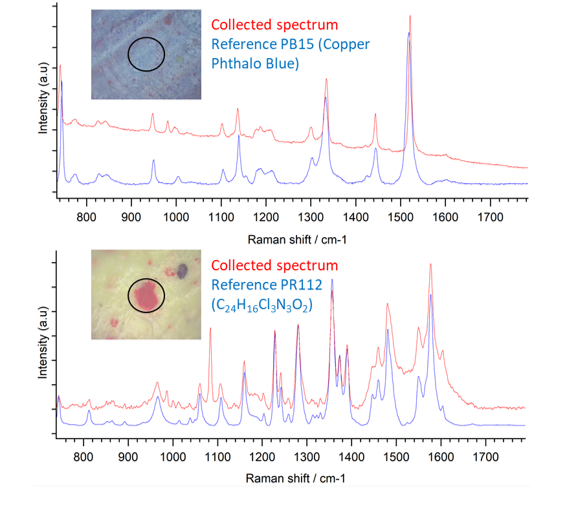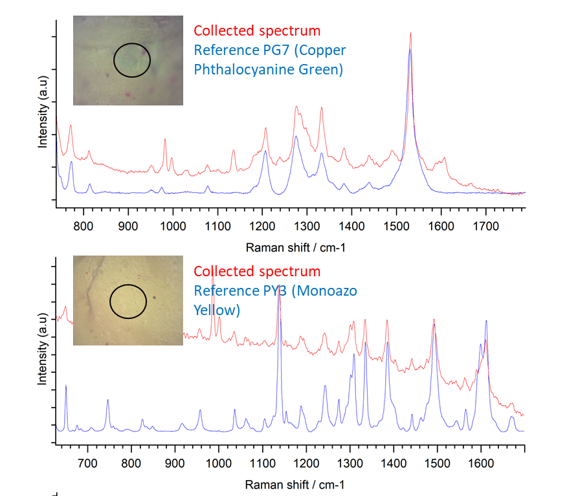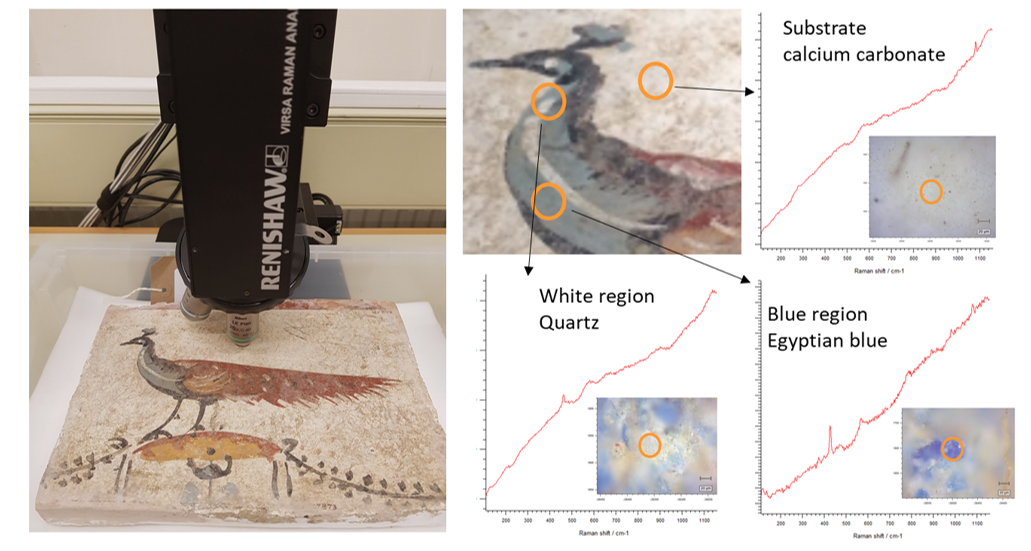Bu sayfa şu anda sizin dilinizde mevcut değildir. Google'ın Çeviri sistemini kullanarak
otomatikleştirilmiş çeviriye
ulaşabilirsiniz. Bu hizmeti sağlamaktan sorumlu değiliz ve çeviri sonuçları tarafımızdan kontrol edilmemiştir.
Eğer daha fazla yardıma ihtiyaç duyarsanız lütfen
bizim ile temasa geçiniz.
Raman spectroscopy for art and cultural heritage
Renishaw's Raman instruments have been involved in numerous investigations of cultural items, including, the Holy (Turin) Shroud, the Vinland map and a Chagall painting. In these, the ability to determine age and authenticity were vital.
Incredibly versatile
Renishaw's Raman systems can:
- analyse pigments and lacquers used in paintings, frescos, murals, and tapestries
- identify inks used in manuscripts, scrolls, maps and books
- investigate gemstones and minerals from cultural artefacts
- determine the constituents of papers, cloths and substrates
- determine authenticity and age by analysing the chemical nature of inks, pigments and lacquers
Preserve samples
Raman analysis is non-contacting and non-destructive, so you preserve your entire sample. You can take measurements in situ so there is no need to remove fragments for analysis.
Identify pigments and paints with Raman microscopy
You can identify pigments and paints by searching for matching Raman spectra in spectral libraries and databases. WiRE™ software's Spectrum Search tool can be used with Renishaw's spectral libraries. Alternatively, you can create your own libraries or import third-party databases.


Raman spectra and microscope images from an acrylic painting illustrating a variety of modern pigments. Good spectral matches were found using a freely available spectral library.
Analyse large samples
Large samples are no problem for Renishaw's Raman systems. If you can move your sample to an instrument, dedicated accessories, such as the flexible sampling arm, provide optimal sampling conditions. If you wish to house large items directly under the microscope, then our free-space microscopes will be of interest. You can customise our Raman systems and provide the right conditions for your analysis.

(A) The Virsa™ Raman analyser examining a peacock fresco from Pompeii, at the Victoria and Albert Museum in London, UK. (B) The peacock fresco with areas highlighted for Raman analysis. (C), (d) and (E) Labelled Raman spectra and optical images from specific regions of the fresco.
Analyse remotely
If your sample is too delicate or is immobile, we have a solution. With the Virsa™ Raman analyser, you can bring in-situ Raman analysis to your sample.

We're here when you need us
To find out more about this application area, or an application that isn't covered here, contact our applications team.
Contact our applications team
Watch Raman Explored seminar presentations
Our recent seminar featured groundbreaking research including:
- Art authentication
- Cultural heritage and conservation
- Minerals, fossils and fossil forgeries
- The origin of the Altar Stone at Stonehenge
- Spectroscopy on Mars
Find out how Raman spectroscopy is making an impact in cultural heritage, conservation and geoscience!
Related news
50 years since the discovery of the Qin Terracotta Warriors
Dr. Yin Xia, the Director of the Relics Conservation and Restoration Department at the Emperor Qin Shihuang's Mausoleum Site Museum, has used an inVia confocal Raman microscope to help identify pigments on the terracotta figures for their conservation and restoration. To commemorate 50 years since the discovery of the Qin Terracotta Warriors, we asked Dr Xia to share some his insights into the conservation of these ancient relics.
Investigating the secrets of Stonehenge with Raman spectroscopy
Stonehenge is the most architecturally sophisticated prehistoric stone circle in the world. In the quest to unravel the mysteries of Stonehenge, Renishaw had the privilege to assist in analysing the Altar Stone in situ using a Renishaw Virsa Raman analyser.
Renishaw's inVia used in conservation activities at the Rijksmuseum in Amsterdam
The Rijksmuseum is the iconic museum of the Netherlands and in 2013, following extensive renovation and restoration, it re-opened its doors to the public. At the museum, art and history takes on a new meaning for a broad-based, contemporary national and international audience.
Raman analysis of art at the Winterthur Museum, Delaware
The Raman technique is ideal for analysing cultural heritage pieces as the ability to examine analyse objects in situ using the sizeable chamber of the Renishaw inVia confocal Raman microscope meant that sampling could be done non-destructively.
Detecting doctored documents - how Raman spectroscopy can help identify forged documents
Raman analysis allows for rapid, non-destructive testing of questioned areas with the specificity to distinguish similar ink types that may visually look identical. We test a method for analysing crossing ink lines to identify possible forgeries.